
Good morning. It’s Thursday, July 26.
| • | A study shows the poorest Californians are near the coast. |
| • | Silicon Valley’s elite prepare for the collapse of society. |
| • | And the most controversial brand in the wellness industry. |
The lede
1
Poorest Californians
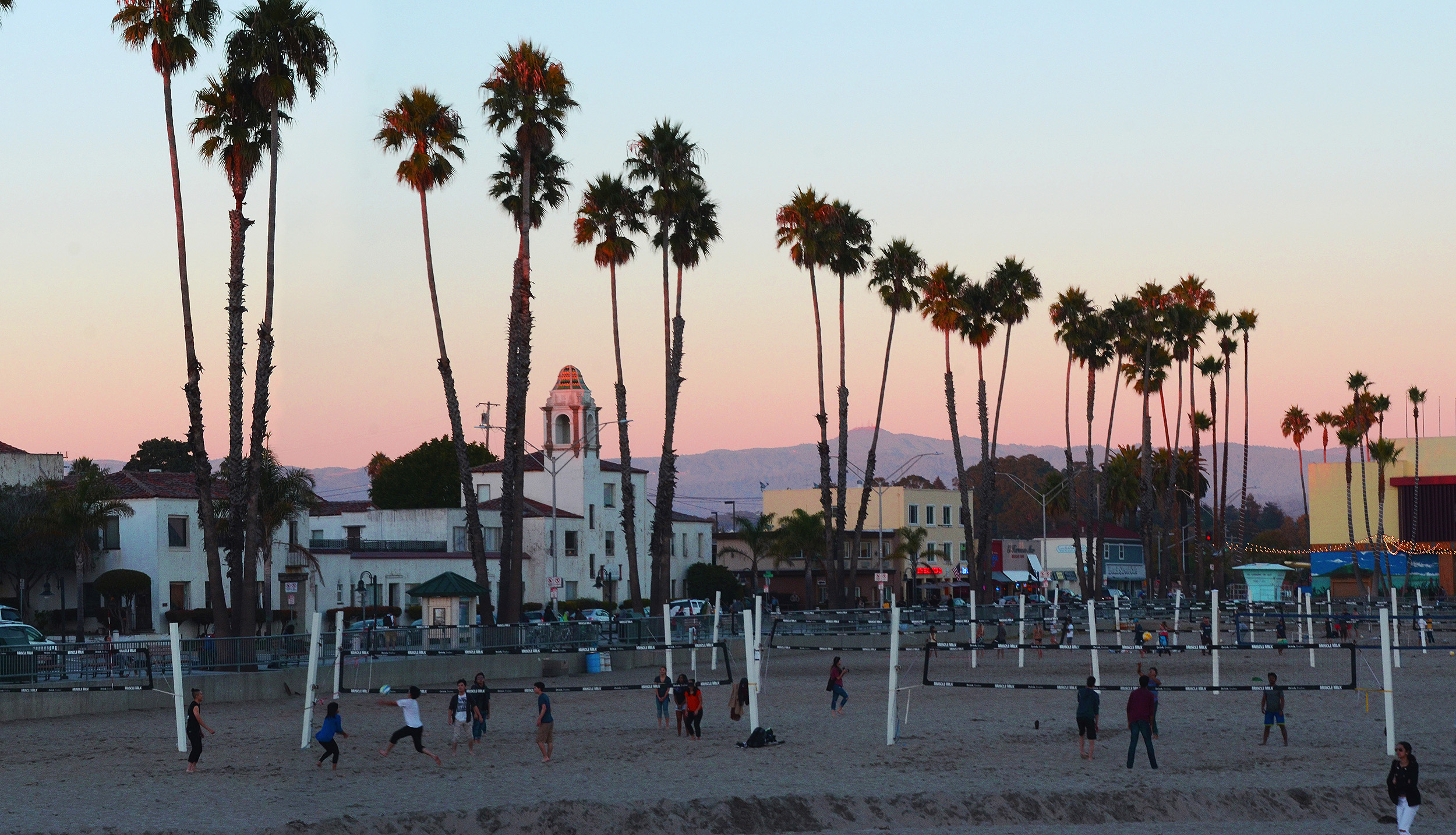
Santa Cruz County has among the highest rates of poverty in the state.
In California, the rural interior has commonly been viewed as the hardest hit by poverty.
But new data showed that the state’s poorest people are actually more concentrated along the coast.
According to a study by the Public Policy Institute of California, Los Angeles County had the state’s highest rate of poverty at 24.3 percent, followed by Santa Cruz County, at 23.8 percent, and Santa Barbara County, at 23 percent.
A researcher, Sarah Bohn, told KQED that the high cost of living on the coast was pushing many families toward hardship. But another factor was at work, she added: Many of those families are working and therefore ineligible for social safety net programs.
Statewide
2
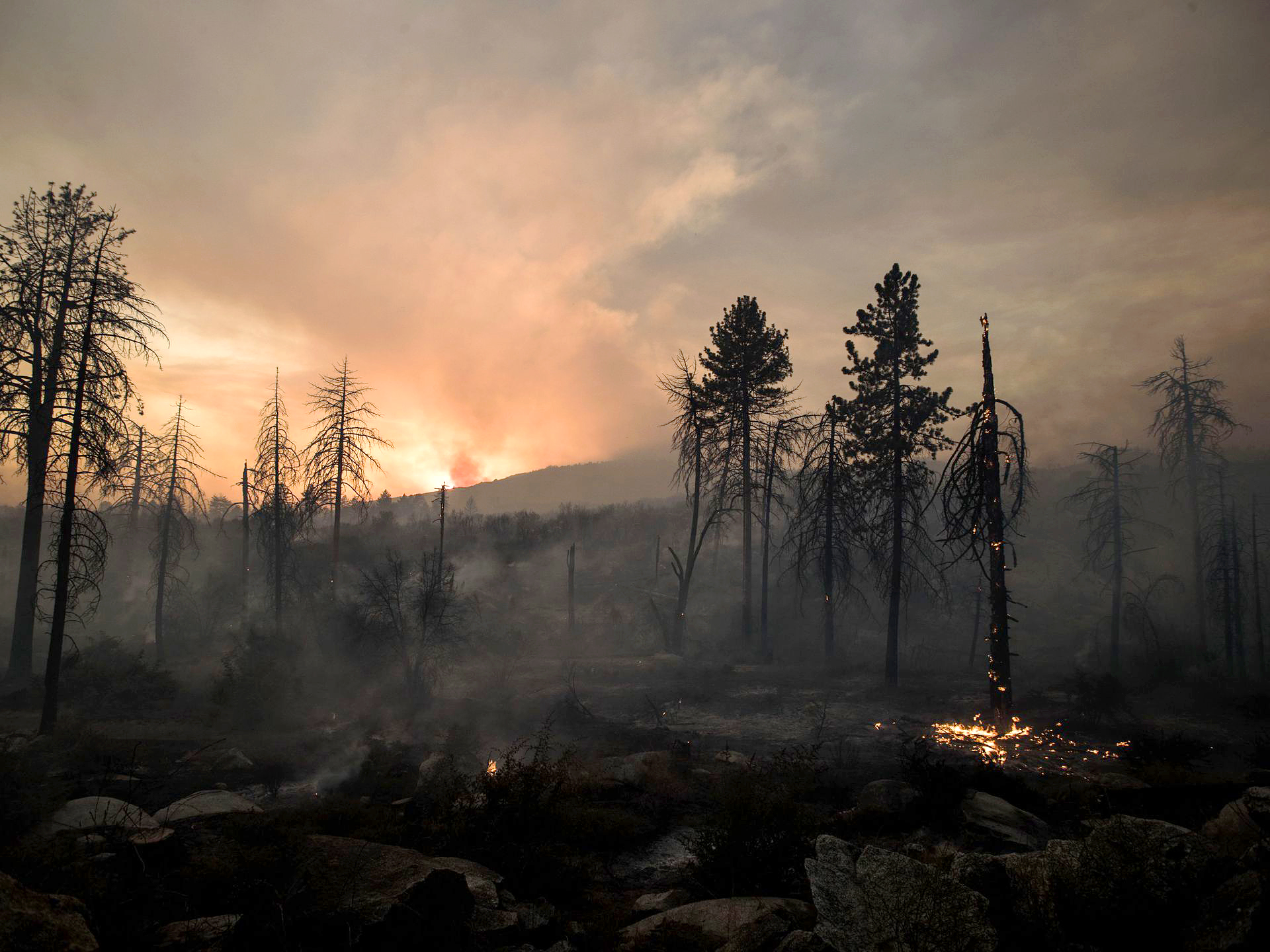
The Cranston Fire swept through a neighborhood in Idyllwild on Wednesday.
Omar Ornelas/Desert Sun
Fast-moving wildfires broke out on Wednesday, fueled by scorching heat and high winds. Among them:
| • | A ferocious blaze swept toward the community of Idyllwild in the San Jacinto Mountains, covering seven square miles, destroying five residential structures, and forcing the evacuation of more than 2,100 homes. It was only 5 percent contained. The authorities arrested a man accused of setting the blaze. Press-Enterprise | Desert Sun |
| • | In Contra Costa County, a wildfire grew to 225 acres near Mount Diablo, destroying one house and forcing evacuations. Officials said the blaze was moving quickly and was not contained. East Bay Times | S.F. Chronicle |
3
California isn’t expected to see much from a $12 billion federal relief package for farmers hurt by President Trump’s trade war. That’s because it leaves out the state’s main agricultural exports, including almonds, pistachios, and oranges. Those farmers stand to lose the most if trade tensions escalate with China and other countries.
4
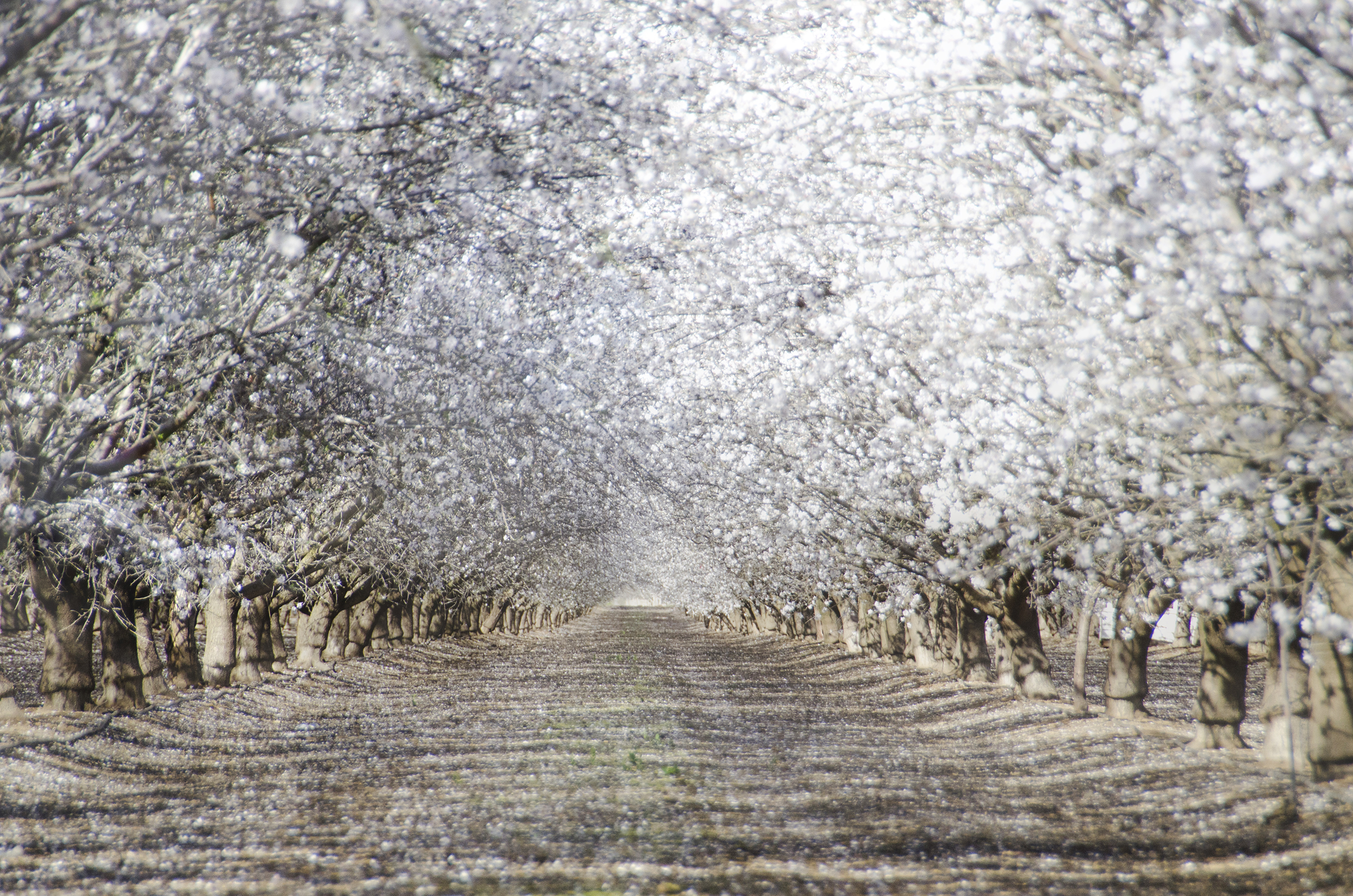
An almond grove in California’s Central Valley.
“An almond doesn’t lactate, I will confess.” A top federal official revived a heated debate over the labeling of dairy alternatives like almond milk. Dairy farmers have been fighting to block companies from calling their plant-based products milk. The issue is fraught in California, which leads the nation in both almond and dairy production.
5
California State University approved raises of about $8,000 to $13,000 a year for campus presidents, vice chancellors, and Chancellor Timothy White, whose annual pay grew by $13,510 to $463,855. The highest paid campus president remained Adela de la Torre at San Diego State, whose pay rose by $12,859 to $441,504.
Northern California
6

Mark Zuckerberg delivered an address at a conference in San Jose on May 1.
Marcio Jose Sanchez/A.P.
Facebook, which has appeared bulletproof for years, saw its stock go into free fall, plunging more than 20 percent after the company revealed that growth in digital advertising sales and in the number of its users had slowed. At one point on Wednesday, the company’s market capitalization shed around $130 billion.
7
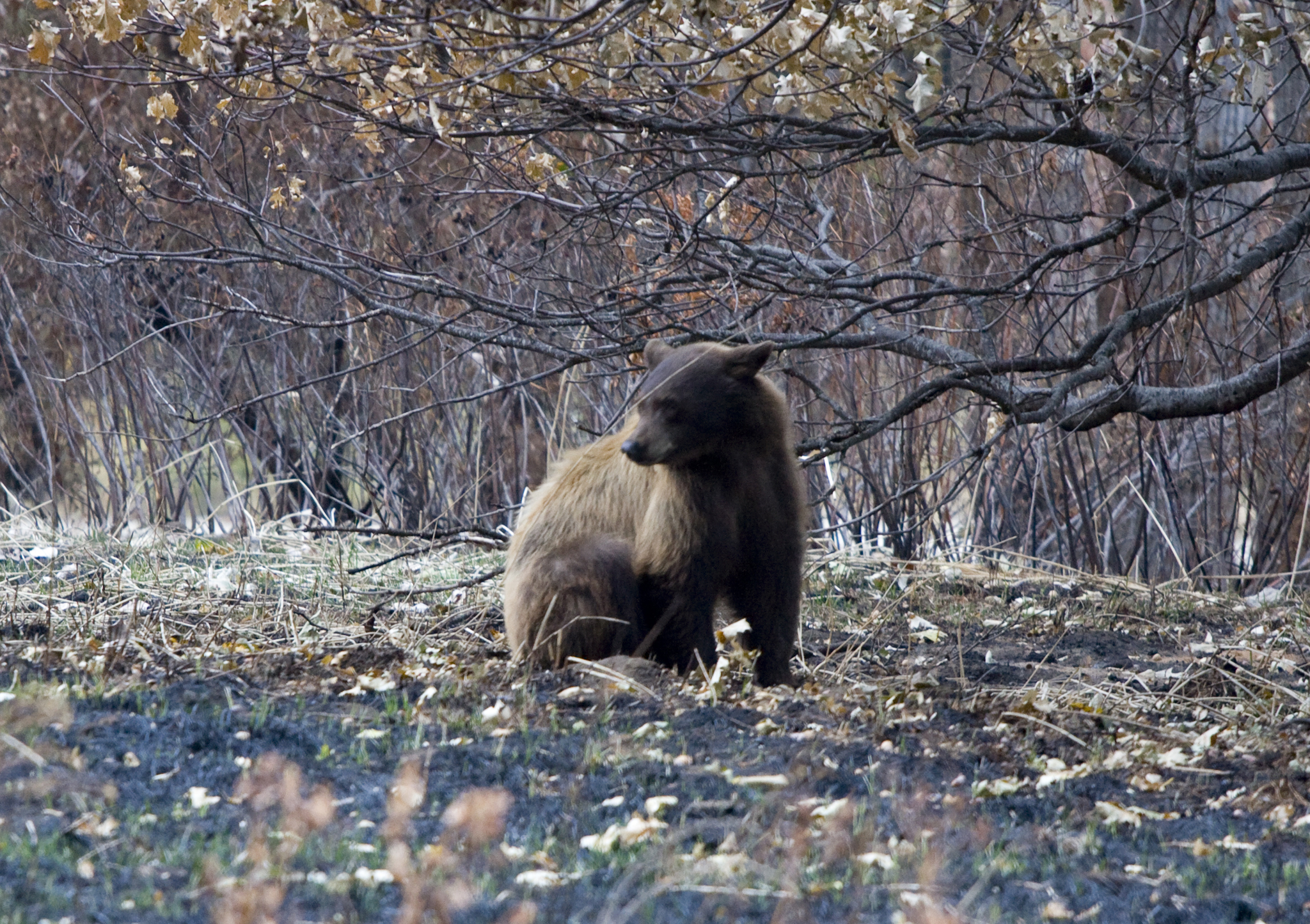
A bear in Yosemite Valley.
Facing pressure from an animal rights group, Shasta County severed ties with a federal agency that killed more than 72,000 wild animals in the county — including 122 black bears — in the eight years starting in 2008. The county contracted with the group to resolve conflicts between people and wildlife. But critics said it overlooked nonlethal strategies.
8
Lawyers are condemning the arrests of at least five unauthorized immigrants at Fresno Superior Court over the past week, raising concerns about whether their rights to due process were violated. A Superior Court judge spoke out after the arrest of a man who was scheduled to appear before him. “I don’t think it’s appropriate for them to be removing him from court,” he said.
9
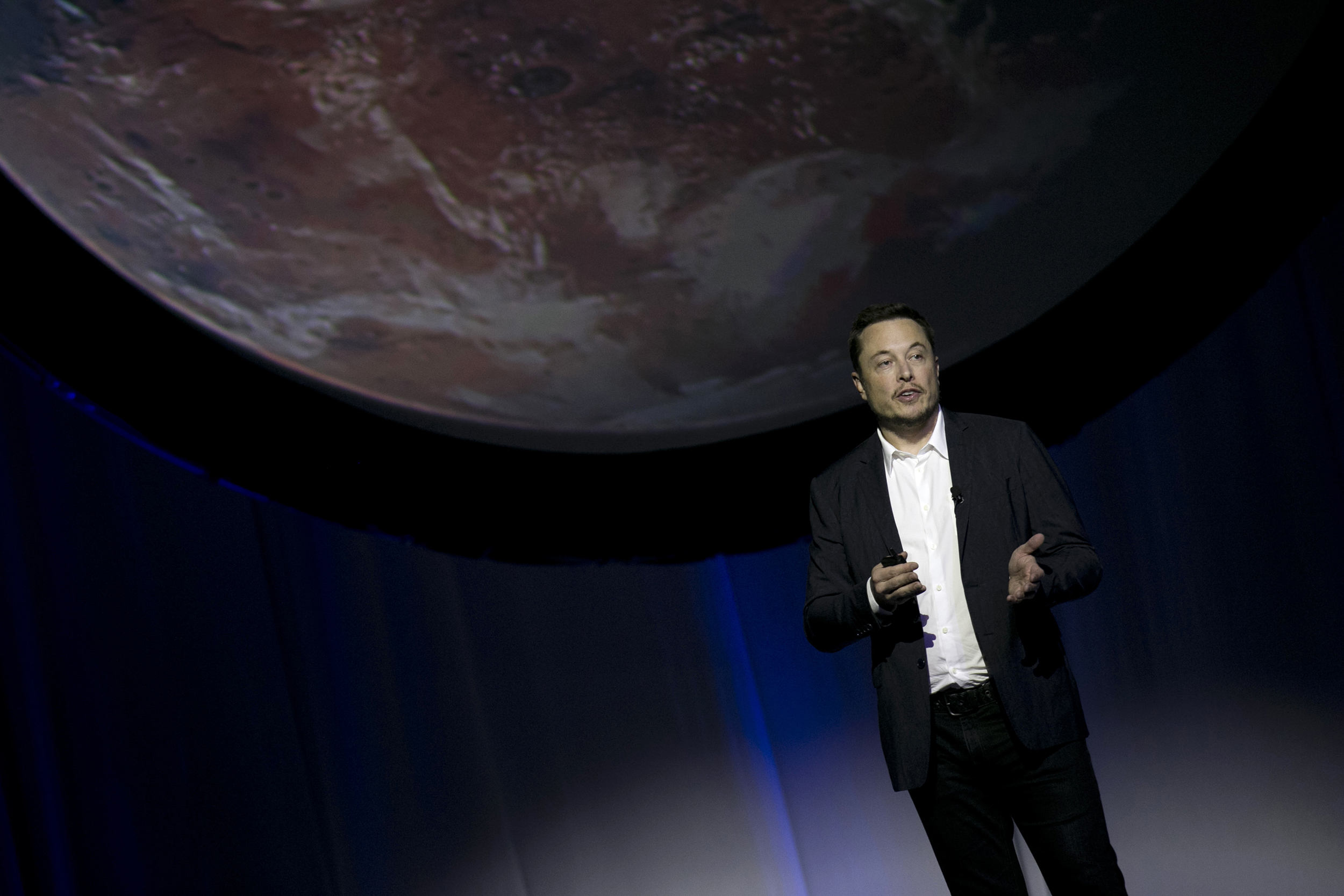
One option popularized by Elon Musk: colonizing Mars.
Refugio Ruiz/A.P.
Rockets to Mars, digitized consciousness, underground bunkers. Silicon Valley’s ultra-wealthy are quietly hatching plans to escape disaster — or what they call the “event,” a euphemism for environmental collapse, social unrest, nuclear explosion, or other horrors. One C.E.O. asked a technology expert: “How do I maintain authority over my security force after the event?”
10
A Mega Millions jackpot worth more than half a billion dollars was sold from a San Jose liquor store, in one of the largest drawings in the lottery’s history. The winner remained a mystery, but the store’s owner, Kewal Sachdev, gets a cool $1 million for selling the ticket.
Southern California
11

Attorney Annee Della Donna held a photo of William Evins, who was convicted of the murder of a woman in 1979, in Santa Ana on Wednesday.
Amy Taxin/A.P.
Prosecutors agreed to review a man’s conviction in a 1979 rape and murder after questions were raised about whether the real perpetrator could be the Golden State Killer. William Evins spent more than 25 years in prison for the killing, always maintaining he was innocent. He died behind bars in 2013. His lawyer said the evidence against Evins was “ridiculously flimsy.”
12
For years, the Chino Valley Unified school board had a tradition of holding a mid-meeting prayer. One time, the president urged “everyone who does not know Jesus Christ to go and find him.” On Wednesday, a federal appeals court upheld a ban on the practice, saying it violated the wall of separation between church and state.
13

Gwyneth Paltrow arrived at a movie premiere in Los Angeles in April.
Jordan Strauss/Invision/A.P.
The N.Y. Times Magazine wrote a great profile of Gwyneth Paltrow and her wildly successful Los Angeles company Goop — “the most controversial brand in the wellness industry.” Fun detail: She initially planned to do a Goop magazine with Condé Nast. But the deal broke down in part because the publisher insisted all articles be fact-checked. Paltrow refused.
14
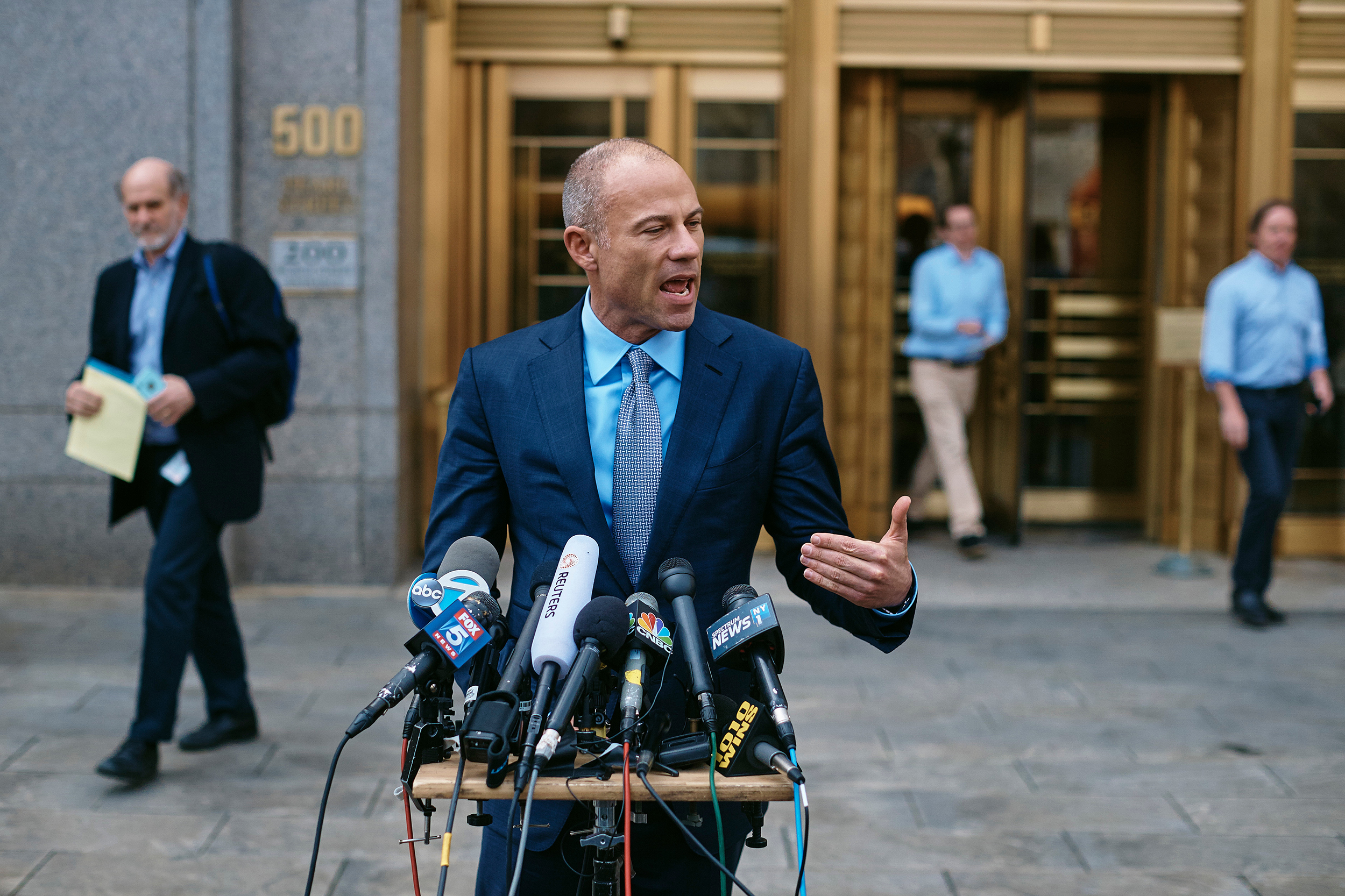
Michael Avenatti has represented Stormy Daniels with swagger that rivals his adversary, President Trump.
Andres Kudacki/A.P.
Michael Avenatti, the lawyer representing porn star Stormy Daniels, convinced a federal judge to block the news media from covering his testimony about his Newport Beach law firm’s bankruptcy. That’s after he spent months demanding transparency from President Trump on his alleged affair with Daniels.
California archive
15
Bulls vs. bears
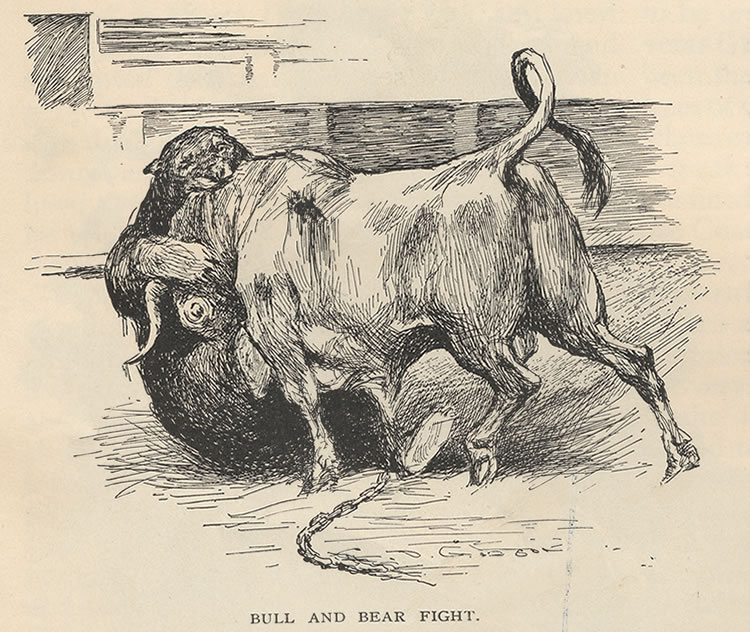
A depiction of a bull and bear fight in an 1890 edition of the Century Illustrated Monthly Magazine.
Library of Congress
In the 19th century, California’s grizzly bears were commonly regarded as menaces. But settlers did see some value in the mighty beasts — as gladiatorial combatants.
Among the pastimes popular at the time were fights to the death between grizzly bears and bulls staged as Sunday entertainment for the after-church crowd.
“A bull and bear fight after the sabbath services was indeed a happy occasion,” the historian Hubert Howe Bancroft wrote in 1888. “It was a soul-refreshing sight to see the growling beasts of blood.”
The practice of setting animals against chained bears, known as bear-baiting, is as old as Rome. In medieval Europe, amphitheaters known as bear-gardens were built to host the events.
Introduced by the Spanish conquistadors, the bloodsport adopted a more homespun character in California. According to historical accounts, battles were waged in so-called “pits” or split-board arenas with raised platforms to provide a view for the women and children.
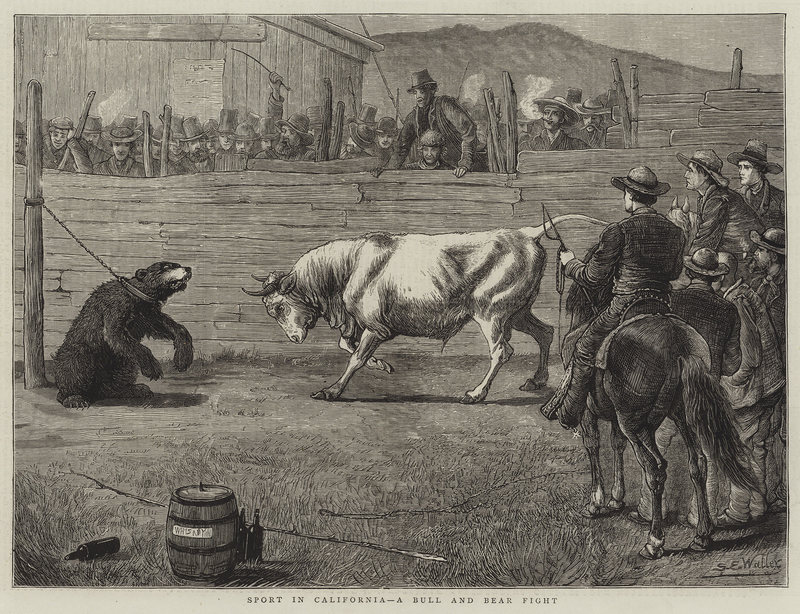
An 1876 illustration of a California bear and bull that appeared in the British press.
The Graphic
Men on horseback manned the perimeter with firearms lest any grizzly try to mount an escape.
In a typical battle, the grizzly bear, standing up to eight feet tall and weighing as much as 800 pounds, would be chained to a post. The bull, its horns festooned with garlands, would be roped to the bear to keep the brutes in each others orbit.
Then, with the crowd in a frenzy, the burst of an officiator’s pistol would set off a melee of swiping, biting, and charging. More often than not, the bear emerged victorious.
Not everyone was comfortable with the cruelty of the contests. The German botanist Adelbert von Chamisso recounted watching a bear-baiting on the beach in San Francisco in 1816. “Unwilling and bound as the animals were, the spectacle had in it nothing great or praiseworthy,” he wrote. “One pitied only the poor beasts, who were so shamefully handled.”
The fights were still going strong mid-century when a wave of prospectors poured into California during the Gold Rush. Many of the newcomers found the spectacle disgusting.
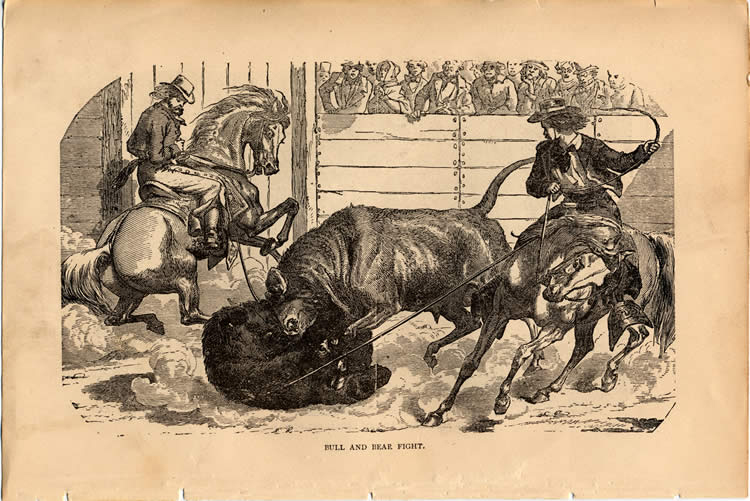
A drawing of a bull and bear fight that appeared in The Wide West in 1854.
Bancroft Library
In 1852, the Daily Alta California denounced the bull and bear fights held Sundays at the Mission Dolores as “a vestige of barbarism” and a “disgrace to the citizens of San Francisco.” Ordinances were passed limiting the fights in both San Francisco and Sacramento.
In time, the bloodsport faded along with the grizzly bear itself. Killed with abandon by the growing population of settlers, the burly symbol of California was scarce by the 1880s. It was extinct four decades later.
California’s animal fighting legacy echoes to this day. Like the bear-baiting contests, cockfighting now thrives in a patchwork of makeshift arenas across the state.
Banned since 1905, the events are often held in secluded barns in farm country, where men drink beer and gamble as roosters weaponized with steroids and gaffs, or fighting blades, peck and claw each other to the death.
Just last year, sheriff’s deputies discovered more than 7,000 roosters being groomed for combat in a remote canyon outside Santa Clarita. It was largest cockfighting bust in U.S. history.
Wake up to must-read news from around the Golden State delivered to your inbox each morning.